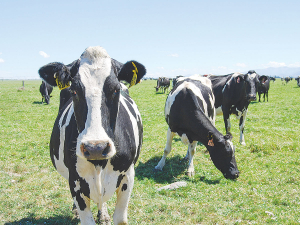2024/25 Dairy Statistics: NZ dairy farmers boost production with fewer cows
According to the New Zealand Dairy Statistics 2024/25 report, New Zealand dairy farmers are achieving more with fewer cows.
 17% of the national herd of 4 million cows did not get pregnant and won’t be producing milk in the coming season.
17% of the national herd of 4 million cows did not get pregnant and won’t be producing milk in the coming season.
OPINION: News that about 17% of the national herd of 4 million cows did not get pregnant and won't be producing milk in the coming season will come as a blow to many farmers and the economy of the country.
While the statistics from LIC are 'interim', the reality is the final figure when they do come out will differ little. It will add to a list of challenges already confronting the industry. Fonterra lowered its 2022-23 forecast farmgate milk price by 20c this month, inflation is still rising, as are interest rates, and labour supply and input costs are still an issue.
Arguably farmers should have seen this fertility drop coming and some did, spending extra cash to get their cows in perfect condition for spring mating.
The weather was unquestionably a problem and many farmers took the risk of milking late into last seaon. For some, this hasn't paid off. It was a tough winter and a late spring and balance days were over a week later than normal. In many cases, grass was low in ME.
But the stark reality which has emerged is that, on average, the reproduction performance of the national herd has dropped significantly. This was flagged in late spring when LIC noted that the submission rate for cows was down by 1.3%. It may not sound much in percentage terms, but the consequences of this will impact on both the meat and dairy sectors, which are intertwined.
If 40,000 plus extra cull cows become destined for the works, can the processors who are already hort of labour cope? Will this flood of cull cows impact on the beef schedule and how will that play out in export returns to New Zealand?
The international meat market is already in a fragile state and the operatins and marketing staff in the meat companies will be scratching their heads to find a way to deal with this challenge.
One could argue that some of the problem was due to farmer fatigue and the lack of quality labour - something incidentally that has affected returns in other primary sectors.
What it does show is that farmers can't afford to drop their game at any time, regardless of their situation.
Legal controls on the movement of fruits and vegetables are now in place in Auckland’s Mt Roskill suburb, says Biosecurity New Zealand Commissioner North Mike Inglis.
Arable growers worried that some weeds in their crops may have developed herbicide resistance can now get the suspected plants tested for free.
Fruit growers and exporters are worried following the discovery of a male Queensland fruit fly in Auckland this week.
Dairy prices have jumped in the overnight Global Dairy Trade (GDT) auction, breaking a five-month negative streak.
Alliance Group chief executive Willie Wiese is leaving the company after three years in the role.
A booklet produced in 2025 by the Rotoiti 15 trust, Department of Conservation and Scion – now part of the Bioeconomy Science Institute – aims to help people identify insect pests and diseases.
President Donald Trump’s decision to impose tariffs on imports into the US is doing good things for global trade, according…
Seen a giant cheese roll rolling along Southland’s roads?